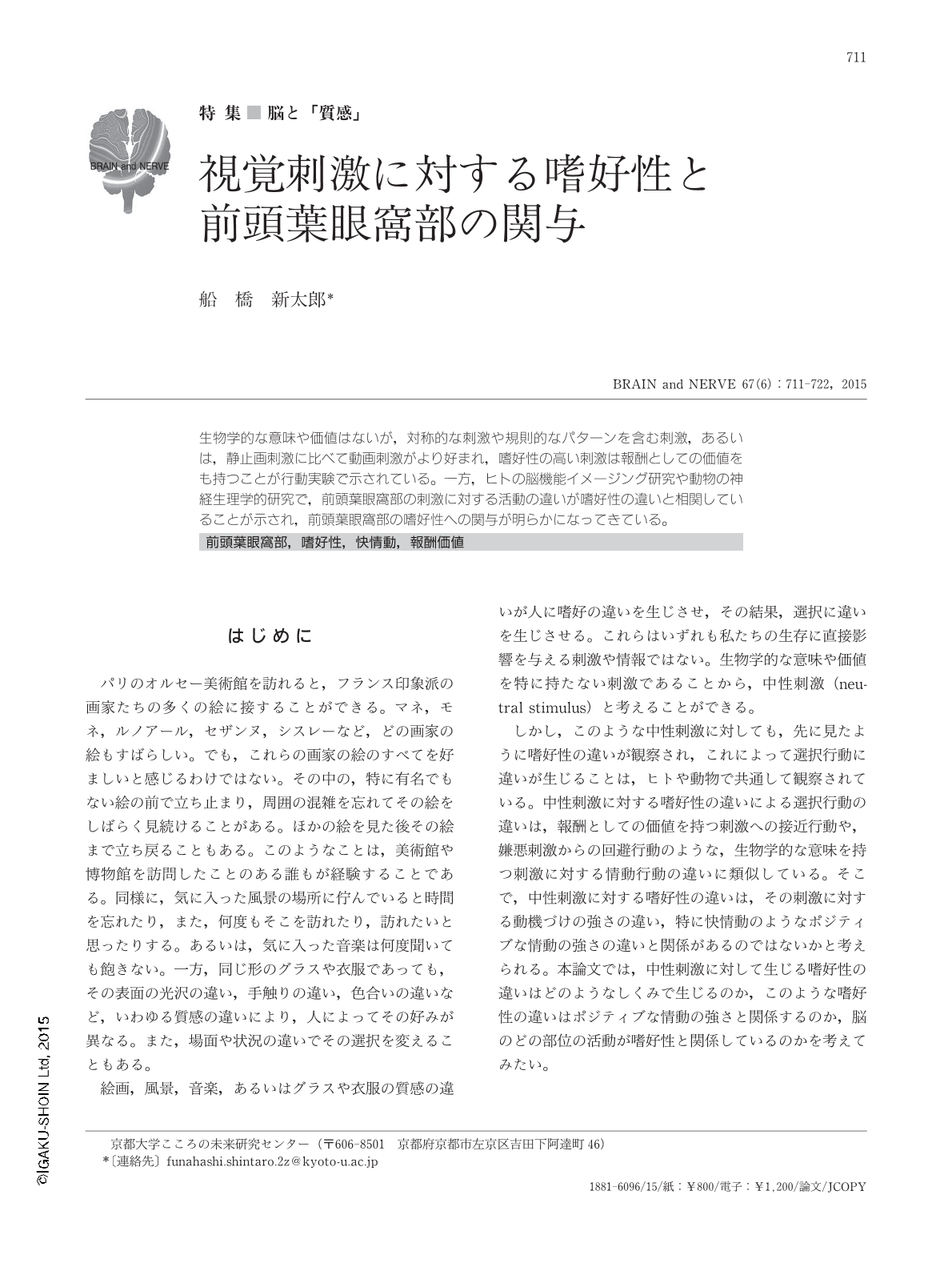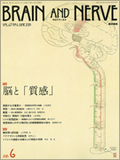Japanese
English
- 有料閲覧
- Abstract 文献概要
- 1ページ目 Look Inside
- 参考文献 Reference
生物学的な意味や価値はないが,対称的な刺激や規則的なパターンを含む刺激,あるいは,静止画刺激に比べて動画刺激がより好まれ,嗜好性の高い刺激は報酬としての価値をも持つことが行動実験で示されている。一方,ヒトの脳機能イメージング研究や動物の神経生理学的研究で,前頭葉眼窩部の刺激に対する活動の違いが嗜好性の違いと相関していることが示され,前頭葉眼窩部の嗜好性への関与が明らかになってきている。
Abstract
Both humans and animals like to watch neutral and biologically insignificant visual stimuli. Behavioral studies have revealed that animals more frequently select stimuli with symmetrical and regular patterns and short movies compared to stimuli with unsymmetrical and irregular patterns and photographs. Preferred visual stimuli can serve as rewards for animals performing behavioral tasks. Preferences for visual stimuli are determined by the magnitude of the pleasant feelings that are experienced when the stimuli are seen. The orbitofrontal cortex is known to participate in the detection and prediction of reward, the estimation of the value of the stimuli as a reward, and positive emotion. Human neuroimaging studies and animal neurophysiological studies have shown that the magnitude of orbitofrontal responses to the presentation of neutral visual stimuli correlates with the strength of the preference for the stimuli in the behavioral studies. These results suggest that the magnitude of orbitofrontal responses to the visual stimuli correlates with the strength of the pleasant feelings that are produced by the stimuli and that the orbitofrontal cortex plays an important role in the judgment of the preference for visual stimuli.

Copyright © 2015, Igaku-Shoin Ltd. All rights reserved.


